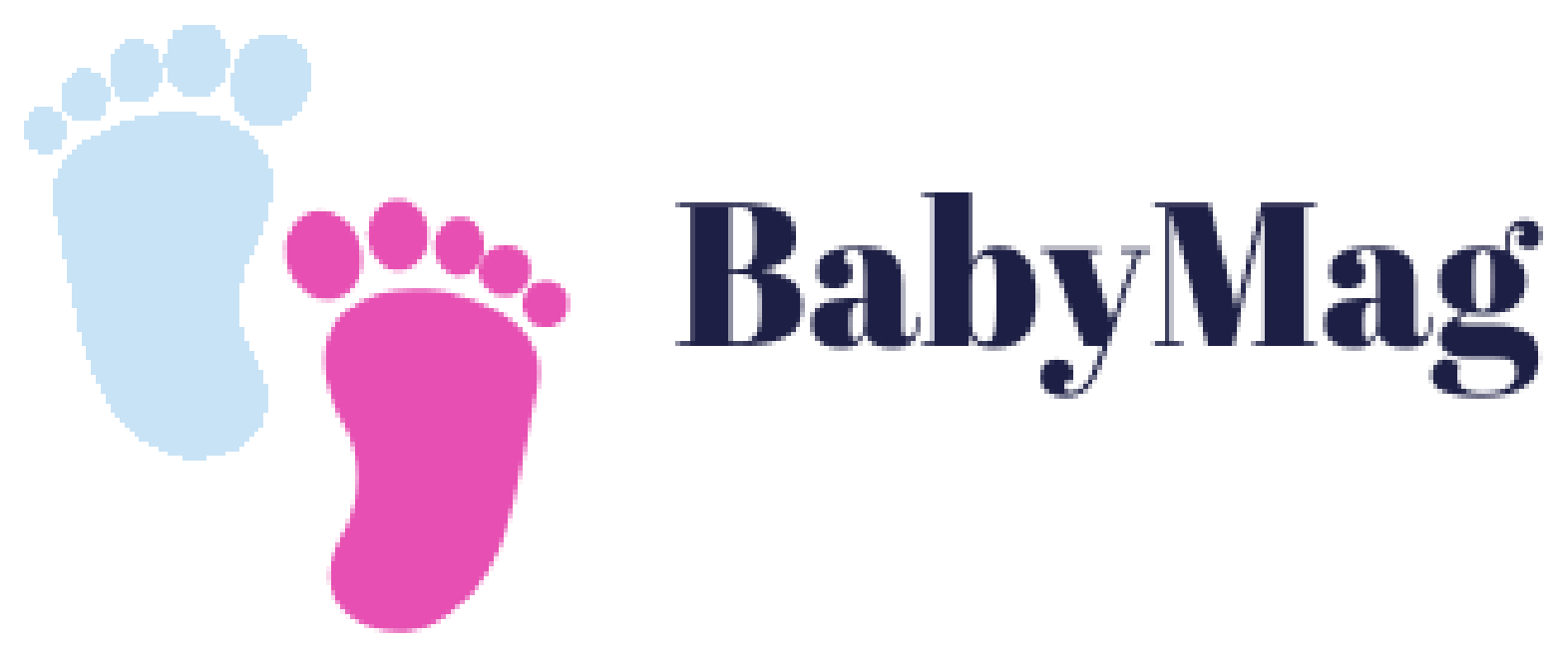You’ve finally done it you’re going to be a parent! Congratulations! You’re about to embark on the most amazing journey of your life. But before you do, there’s one more important decision you need to make: what kind of stroller are you going to use?
If you’re planning on having two kids or more, then a double stroller is a must. But with so many different options on the market, how do you know which is the best double stroller for your family? That’s where this article comes in. We’ll help you consider all the important factors, from budget to features, so that you can make the best possible choice for your little ones.
So whether you’re looking for the best double stroller for twins or the best double stroller for a toddler and baby, we’ve got you covered. Keep reading to learn everything you need to know about choosing the perfect double stroller for your family.
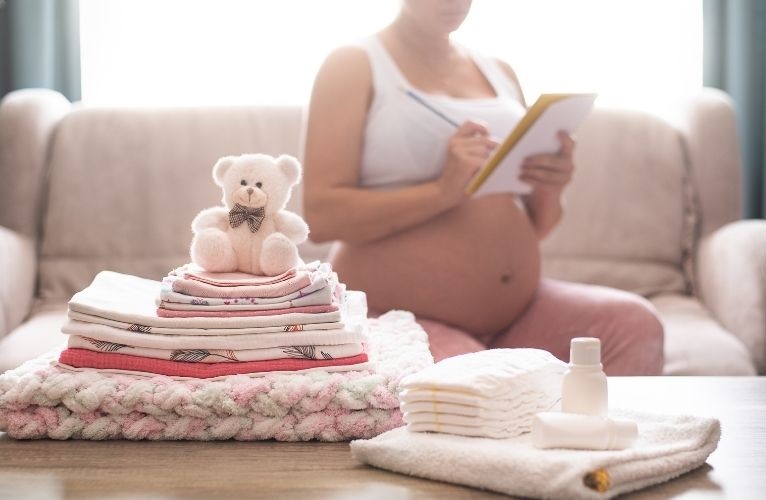
Congratulations on the new arrival! As a new parent, you have a lot of things to take care of in those first few months. A baby checklist can help make sure you don’t forget anything. Below is a comprehensive list of things to think about and add to your personal list or baby registry!
Table of Contents
Baby Clothing Checklist
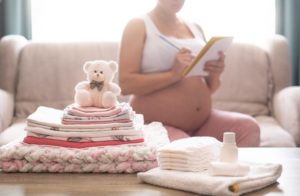 The first year of a baby’s life will need clothing that corresponds with the seasons, which implies T-shirts, onesies, pajamas, and other items.
The first year of a baby’s life will need clothing that corresponds with the seasons, which implies T-shirts, onesies, pajamas, and other items.
It’s usually advisable to buy clothing labeled “0-1 years” or “infant.” While your child will most likely grow considerably in the first year, you shouldn’t worry about them outgrowing their original clothes till at least six months have passed.
Seek clothing made entirely of cotton or as near to it as feasible. Polyester mixes can be more cost-effective (and therefore better fitting), but they irritate a baby’s skin occasionally.
➢ Jacket. Nothing beats a sweatshirt or coat to keep your newborn baby warm. Cardigans and coats are more accessible to take off than shirt sweatshirts and can be worn outside the weather changes.
➢ Swaddle blanket. You may wish to swaddle your baby throughout the first few weeks, and a specific covering might be helpful. Although a weighted blanket may be used, various alternatives are accessible, such as those with a hook-and-loop bolt for added convenience.
➢ Pajamas or sleepers or sleeping sacks. Sleepwear is a critical component of baby essentials since your kid will sleep most of the time. Sleepwear, whatever type you select, will almost certainly include foot coverings; some jammies do, as do sleepers and sleeping bags. Some sleeping sacks allow babies to wear pajamas beneath them.
➢ Undershirts and One-piece outfits. Snaps between the legs are used in diaper-changing designs, making it very simple to access baby diapers. Choose clothing with short or lengthy sleeves and between ones that expose your newborn’s legs wholly or entirely cover their legs and feet, depending on the weather.
➢ Knit hat or cap. If you deliver your baby in the middle of summer, keep one of these on hand to keep their head cool and comfortable.
➢ Socks. You’ll need a lot of socks and maybe some booties as well. Your kid doesn’t require actual shoes yet because they aren’t walking outside just yet.
➢ T-shirts. If you want to dress your new baby in leggings or pants during the day, you’ll need t-shirts.
➢ Mittens. Adorable little mittens are ideal for the colder months. They also prevent your baby from scratching themselves.
➢ Hat with a brim. This will help your kid stay safe from the sun, especially for those near the beach!
➢ Bunting bag or snowsuit. A bunting bag or snowsuit is a must-have if you plan on visiting the park during the winter! Some designs also include attached gloves.
➢ Special clothing. This is a luxury item, but we decided to include it on our newborn checklist if you want something for a holiday or special event. Remember that your infant will outgrow whatever you’re wearing very quickly, so take lots of pictures while you still have time!
Baby Nursery Checklist
Many (otherwise most) parents-to-be find that the nursery is the most important room in their house! If you’ve been enjoying nesting but aren’t sure if you have all of the basics, this child’s nursery list is an excellent resource for everything you’ll need:
➢ Bedding. You don’t need much bedding—just a waterproof cushion cover and several fitted sheets that fit your crib mattress entirely. The danger of suffocation and sudden infant death syndrome can be reduced if your baby’s crib is kept bare (without additional bedding, including coverings, leading sheets, pillows, and bumper pads).
➢ Bassinet. Although this isn’t a requirement, we included it in our newborn checklist because some parents like to use a Bassinet in the first few weeks. Carrycots are tiny and portable; they take up far less room than cribs and can easily be relocated from space to place. Of course, your youngster will eventually require a baby crib.
➢ Crib. The baby crib tops our selection when it comes to newborn baby requirements. Your little one will require a risk-free baby crib to oversleep in the early days and weeks, as they’ll be resting for at least 16 hours a day! A baby crib might be pricey, but if you pick a design that converts into a young child bed and then a daybed, it may last for years. Some versions even have the potential to turn an entire-sized bed into a daybed in the future! It’s easiest to buy new cribs; this way, you’ll know your child.
➢ Crib bed mattress. A solid mattress that correctly fits your crib is one of the most important necessities for newborn babies. This is the ideal resting surface area.
➢ White-noise equipment. Soft music or white noise may help your baby relax and fall asleep.
➢ Night light. You’ll thank us for including this newborn baby, which is vital to our list! A night light is a must-have for any new mother. A night light is an excellent tool for keeping track of your kid as they go about the house at night. It can alert you to where and what you’re doing without using bright lights. A night light may also offer peace of mind when your child gets up in the middle of the night.
➢ Pacifier. Infants may suck on a pacifier to soothe themselves. Therefore this may be something you need. Keep in mind that pacifiers have a tendency to disappear, so keep a few on hand! Pacifiers come in various sizes and can be found in all styles; ensure you get one suited for the newborn stage.
➢ Humidifier. A humidifier helps to keep the air moist. If the air in your nursery is mainly arid, your doctor may advise you to get one. If your newborn has a cough or cold, staying away from excessively completely dry air might make them more comfortable.
➢ Clothes storage space. Even if you’ve just finished the basics, you’ll need somewhere to store your baby’s clothing. The cabinets or racks that incorporate the changing table may be sufficient in certain situations. Alternatively, baskets or bathtubs can be used to arrange clothes; wardrobes with upper drawers or doors also make good choices.
➢ Mobile. A mobile that’s brightly colored, has a variety of shapes and is securely placed high up will keep your kid occupied. An excellent option is mobile with many forms and bright colors (mainly red, as it’s the first color babies see).
➢ Rocking chair. A comfortable chair in the nursery is ideal for feeding, bedtime stories or lullaby, and the last hug before sleep. It may help your kid sleep better at night by shaking, and the shivering might help relax you and your baby.
➢ Toy basket. Although a toy basket is not required in and of itself, it’s helpful to have somewhere to put your newborn’s toys. You may also keep toys on shelves if you have them.
Baby Diapering Checklist
It’s tough to get ready for the arrival of a new kid without considering essential things such as how you’ll deal with baby diapers.
There are many types of cloth baby diapers, from single-use to reusable. Disposable and washable baby diapers can be a great money saver if you’re on a budget, but they demand more work than towel baby diapers since they must be washed and dried separately.
Let’s not forget hybrid baby diapers (this is a point)! Some modern versions of diapering are both multi-use and flushable.
You’ll also need to choose between pre-moistened or dry, disposable or reusable fabric, and bulk or grab-and-go. Ideally, a balanced combination of all these is ideal because situations will undoubtedly demand them at some point.
Keeping your baby clean is a 24/7 job. So, if you anticipate using X number of diapers or wipes, round it up to 25%.
For every contingency, obtain the following items:
➢ Changing pad. Like a baby bath, a changing pad is an essential infant item. A changing table with a changing pad keeps your child and the changing table clean. Some pads can be washed cleanly, while others come with detachable covers for cleaning. If ease is vital to you, this is undoubtedly one of the most essential baby items!
➢ Changing table. You’ll need a clean, well-lit place to change your child’s baby diaper. Changing tables generally have drawers or racks to get at things like baby diapers, wipes, and fresh clothing without disturbing your kid. Just ensure that the items are out of reach of your baby. Most changing tables include a band that you may use to secure your baby and prevent falls if they lose their balance suddenly. Even when you’ve secured the strap, keep at least one hand on your newborn whenever they get on a higher surface.
➢ Baby diapers. The newborn may need 70 baby diapers each week. It’s tough to know in advance what size diapers your kid will require, so it’s a good idea to buy small packs of several sizes. Choose between Swaddlers, Baby-Dry, and Pure. After your kid is born, you may buy more of the ideal size.
➢ Diaper Rash Cream. It’s not unusual for newborns to get a diaper rash from time to time. Consult with your child’s physician about using any cream or ointment.
➢ Baby diaper pail. Baby diaper pails were included in our newborn checklist even though they are not required since they assist prevent the spread of odors from contaminated clothing. There are a lot of diaper pails on the market, but whether you want one with standard trash can lids or one with a unique liner ring marketed by the manufacturer separately is a crucial decision. Special liners are far better at capturing scents, but they will also cost you more overall.
➢ Wipes. Wipes should be used to clean your newborn’s diaper region. Pure Protection, Aqua-Pure, and Pampers Delicate are some of the options.
➢ Washcloths. Wipe your newborn’s diaper area with a clean cloth dampened with warm water. A washcloth may also be used to clean your infant at bathroom time.
Baby Bath Checklist
It was formerly customary for youngsters to bathe in portable basins and pails.
Because of their tiny size and relatively more minor skin area, kids do not require much time to bathe. Furthermore, building a full bathroom in the bathtub is frequently unnecessary, or devote an hour to keeping your youngster clean and comfy.
The right style of a baby bathtub with a hammock may make bathing much more convenient for you and your child. And while they’re commonly sold at thrift shops or yard sales, many may be found for a low price (just ensure they’re clean!).
Showering necessitates the following items:
➢ Baby bath seat or tub. Your newborn will take sponge baths for the first few days until the umbilical cord stump falls off; nevertheless, you’ll need a seat or bathtub for bathing at some point. Make sure it is suitable for babies and has a newborn insert to fit their tiny size.
➢ Baby moisture. You can use a non-perfumed baby moisturizer on your newborn if they have dry skin areas.
➢ Cup A plastic cup lets you gently wash your infant’s hair or skin with water, removing soap or shampoo. It is critical not to splash soapy water in your child’s eyes!
➢ Towels. If you don’t have a hooded towel, consider getting one that is soft and smooth.
➢ Soap. Choose a light soap made especially for babies and tiny infants.
➢ Shampoo. If your baby has hair, you may use a hair shampoo designed specifically for youngsters.
➢ Washcloths. You must be highly delicate when cleaning your infant’s face, as wiping too firmly may irritate their sensitive skin or aggravate eczema. These items might assist you in this endeavor.
Baby Feeding Checklist
Even the most basic newborn needs list would be incomplete without discussing feeding fundamentals.
There’s a lot to consider when it comes to feeding. Talking to your doctor about preparing for optimal nutrition is also a good idea.
Whether or not to breastfeed is one of the most crucial decisions you’ll have to make. If you decide to use formula, be sure you’re comfortable with the components that many pre-packaged brand names contain.
If you are extending your child’s breastfeeding, it will be beneficial to have a strategy for dealing with the transition. Many new moms continue to breastfeed their babies throughout infancy, which requires plenty of nursing bras and tank tops!
As you go through your baby’s needs checklist, don’t forget these feeding items:
➢ Bottles and nipples. Baby bottles are a must-have for any new parent, whether you intend to breastfeed or give your baby formula. You may choose between glass and plastic bottles, with some of the plastic ones having a container lining insert to limit the amount of air your baby consumes. When picking a container, remember the nipple area sizes and forms. You may need to test several nipples before discovering one your baby likes.
➢ Breast pump. You may pump your breasts to express milk when needed, such as if you’ll be away from your kid for more extended periods. Some versions pump both breasts at the same time.
➢ Bottle warmer. Keeping your baby’s stored breast milk or formula warm might be challenging. A bottle warmer may be a real-time-saver and an essential baby item since it helps ensure that the milk is equally heated.
➢ Formula. The wide varieties and brand names of formulas are available, so talk to your pediatrician about which kind is best for your baby.
➢ Container brush. You may use the brush to clean out your bottle.
➢ Burp cloths. Burp rags protect your clothing when you burp your child if they regurgitate a little (or a lot!).
➢ Bottle-drying shelf. This isn’t a vital product, but having an assigned area to dry your baby’s bottles is good because you don’t have much space on your dish-drying shelf. You also want to consider bacterial contamination if the bottles are drying with regular dishes.
➢ Nursing cover. A nursing cover can also help you and your child breastfeed in privacy. It usually has a band that you may wrap around your neck to keep it in place.
➢ Receiving Blankets. A receiving blanket often sold in pairs or more is a thin coverlet. They have been added to your newborn wish list because they are versatile. These coverings may be used as nursing covers and burp cloths, and you may also swaddle your kid with them.
➢ Nursing pillow. Consider getting one of these U-shaped easy cushions for further comfort for you and your baby. These robust pillows provide your newborn somewhere to lie other than your arms, which takes some of the strain off your body.
➢ Bibs. Bibs are an essential item since they may protect your infant’s clothing from milk, formula, and drool.
➢ Milk storage space bags. The bags are tiny to store breast milk and aid you in keeping it neatly. They’re generally single-use goods, so you may save money by not purchasing bottles for storage. You can frequently pump straight into the bag as a bonus.
➢ Bottle sterilizer. Though cleaning bottles and nipples by hand or in the dishwasher are just as effective, some sterilizers include a bottle warmer.
Baby On-The-Go Checklist
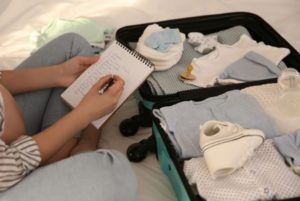 You’ll have a growing number of opportunities to go out and start exploring the globe with your newborn in the days and weeks after you first bring him home.
You’ll have a growing number of opportunities to go out and start exploring the globe with your newborn in the days and weeks after you first bring him home.
Whether you’re going somewhere or doing anything, you’ll want to carry everything you may need for ‘infant chores’ while out and about. After all, as a parent, every little thing your toddler requires at home will also be required on the road!
Small newborn baby things are generally created for the explicit purpose of being transportable. Make full use of these helpful, time-saving items that were made with simplicity.
Make sure your baby’s needs are complete with the following ‘on-the-go’ goods:
➢ Baby stroller. Several types of strollers are available on the market, including child seat service provider strollers, travel systems, and full-sized baby strollers. Check whether the baby stroller you want meets the most current safety standards.
➢ Stroller rain cover. This item is frequently included when you purchase a stroller. If one isn’t available, universal versions are widely accessible.
➢ Car seat. A car seat is one of the most essential items on our newborn baby checklist. The minute you arrive home from the health center, and every time you travel in a car, your infant will require one. Select a rear-facing car seat that meets the most recent safety guidelines and is suitable for your baby’s size and weight. Before your due date, ensure the seat is correctly fitted to your vehicle and installed facing the back.
➢ Baby carrier or wrap. This item may be beneficial for keeping your baby close while you move about and allowing you to use both hands. Wrap carriers, slings, front packs, and backpacks are available from baby care businesses in various designs. Remember that some child carriers require a newborn insert for this age range. When using your service provider, follow the most up-to-date security standards.
➢ Diaper bag. A baby diaper bag that fits all of your kid’s belongings when you’re away from home is a must-have. You’ll be grateful to have one when you realize how many things you can fit in. Baby diaper bags come in various styles, from functional to fashionable. With a knapsack baby diaper bag, you won’t even look like you’re carrying baby gear.
➢ Portable changing pad. A portable changing pad may also help you keep a clean place to change your child’s diapers. The pads are usually relatively tiny and compact to fit in most diaper bags.
➢ Sunlight shade for car windows. Protecting your baby’s delicate skin is critical by keeping them out of direct sunlight. To keep your newborn out of the sun, you may want to cover the back-seat home windows of your car with a shade cloth.
➢ Portable crib. If you’re going to your Grandmother’s or transporting your infant, a portable baby crib may be a must-have for your way of life. Make sure the portable crib you’re considering meets the most current safety and security standards.
➢ Portable baby diaper pail. These are wonderful for keeping your kid’s filthy nappy changing rags where you can find them, no matter where you go.
Baby Playtime Checklist
As your child grows, they’ll most likely be passionate about everything in their environment (as well as we suggest whatever).

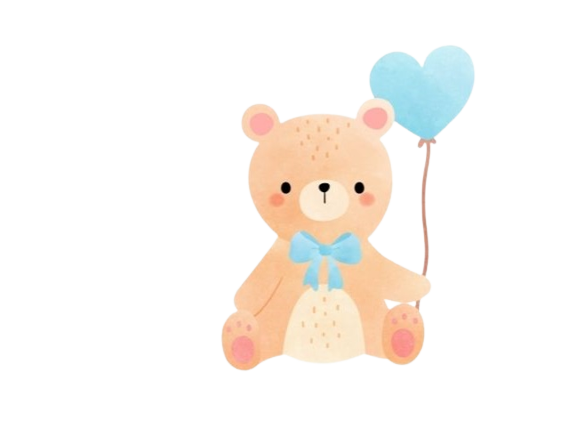
Every kind of stimulation will be a fresh discovery. This also applies to seeing, hearing, aroma, taste, and touch.
When vivid, high-contrast, and tactile objects are accessible, playtime for youngsters grows more pleasurable and exciting.
This is a critical period in your child’s cognitive development. To help your infant get the most out of play, make sure to include these items on your list of must-haves for a new kid:
➢ Toys. Babies and very young youngsters don’t enjoy a lot of playthings right now, apart from simple rattles or books with high-contrast pictures. After some time, soft toys that make sounds, stacking playthings, push-pull toys, and active boxes with a wealth of intriguing features can all provide fun and stimulation for your older baby. Regarding baby toys, it’s critical to make sure there are no tiny parts that could be a choking hazard.
➢ Play mat. Every day, babies get a lot out of tummy time. Place a thin, soft play mat on the floor to give your youngster somewhere to rest for a few minutes of tummy time several times a day. Always keep an eye on tummy time.
➢ Baby bouncer. Bouncers are similar to infant swings but jump because of your child’s kicking. Bouncers may be a must-have for you since they allow you to get things done while knowing that your baby is secure and entertained. Because baby bouncers have such lightweight requirements, check to see if the company’s standards meet yours.
➢ Portable play yard. This might offer your infant a secure, encapsulated space to nap or play while you get things done elsewhere. Portable play yards are fantastic since they enable you to bring them where you need them most.
➢ Baby swing. Swings sway or shake to soothe your baby. Unlike a baby bouncer, a swing generally moves without your newborn having to use their legs; instead, you increase the movement with the swings or vibrations option. Make sure you check the weight restriction of baby swings before purchasing one for your infant. Baby swings often have hanging toys and/or make sounds or play songs, so keep that in mind if you’re shopping for one.
Final Thought — Baby Checklist
There are several items that you should put on your baby checklist. Of course, every family is different, and you may need to add or remove items from this list depending on your individual needs. Baby supplies can be expensive, so it is essential to do your research before making any purchases.
You can ask friends and family for recommendations and look for sales and coupons to help save money. With some forethought and preparation, you will have everything you need to welcome your new baby into the world.
